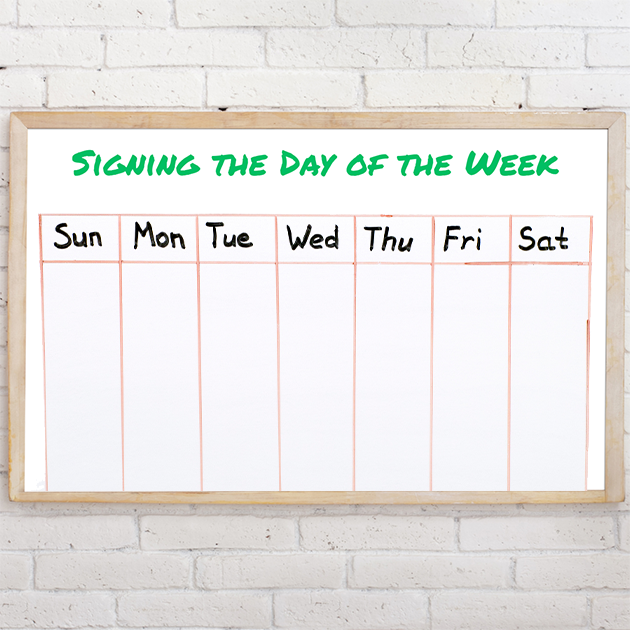Showing TENSE while signing ASL
One thing that many new signers struggle with is how to show tense (past, present and future) while signing. In ASL, you don't sign words like went or going or suffixes like "ing", "ed" or "s".
By including the sign NOW at the beginning of a sentence, you can clarify the sentence is in the present tense.
English Version: I am going to the store.
ASL Version: NOW + STORE + I + GO.
By including the sign PAST or BEFORE (the open hand waves back over the shoulder in a single motion) at the beginning of a sentence, you can change the meaning of the sentence from present to past.
English Version: I went to the store.
ASL Version: BEFORE + STORE + I + GO
Alternatively, you can make the sentence show past tense by adding the sign FINISH to the end OR the beginning of the sentences.
English Version: I went to the store.
ASL Version 1: STORE + I + GO + FINISH
ASL Version 2: FINISH + STORE + I + GO
You can make the sentence show future tense by adding the sign NEXT to the beginning of the sentences.
English Version: I will go to the store.
ASL Version: NEXT + STORE + I + GO
To summarize, in ASL we use the following signs to clarify the tense:
- NEXT to show FUTURE TENSE
- PAST/BEFORE or FINISH to show PAST TENSE
- NOW to show PRESENT TENSE
The time of the day that the signer is signing the phrase can effect how the sentence is interpreted, even though the words/signs are exactly the same.
For example, if the sentence below was signed in the morning, the interpretation would be as shown: "Tonight, I will eat dinner."
English Version: Tonight, I will eat dinner.
ASL Version: NOW + EVENING + I + EAT + DINNER
But if the same sentence was signed late in the evening, its' interpretation would be: "Tonight, I ate dinner".
English Version: Tonight, I ate dinner.
ASL Version: NOW + EVENING + I + EAT + DINNER
As you can see, communicating tense can be a tricky thing sometimes. My recommendation is to pay attention to how others sign tenses and consciously practice it as you sign.
ADVERTISEMENTS









Savvy User CarmenSunday, January 22, 2012
should be: now + evening + I + finish + eat + dinner